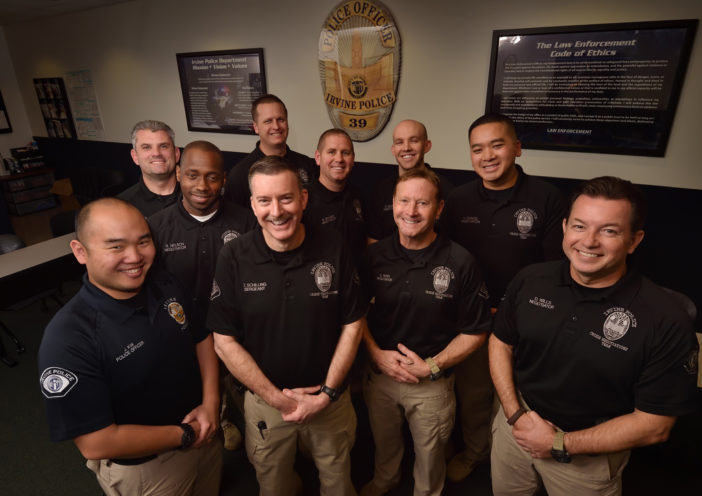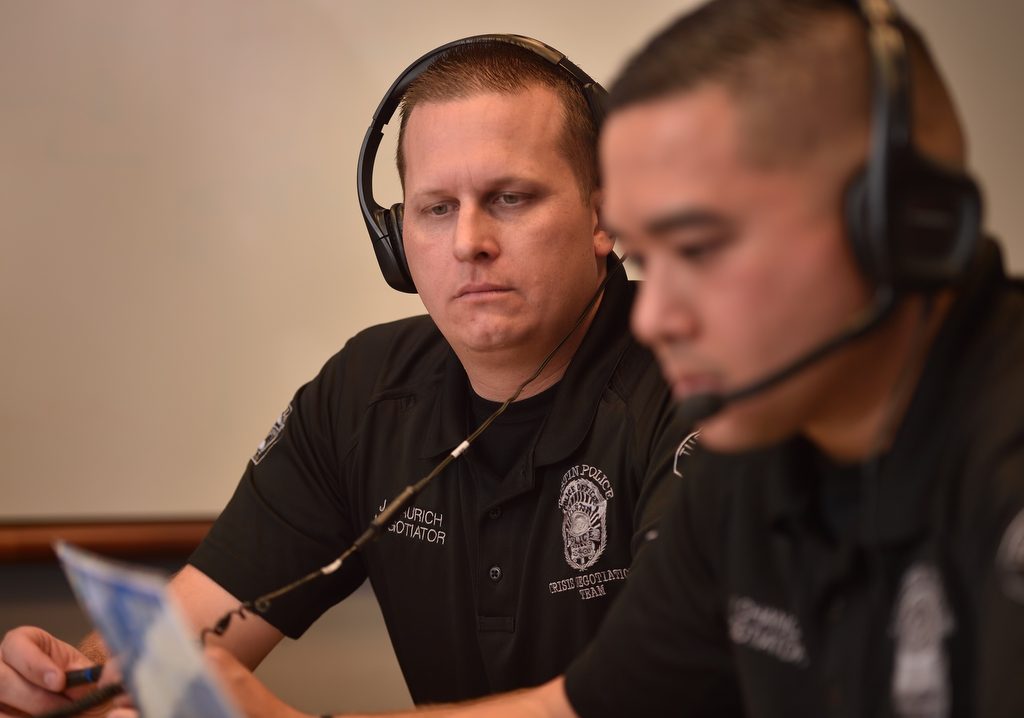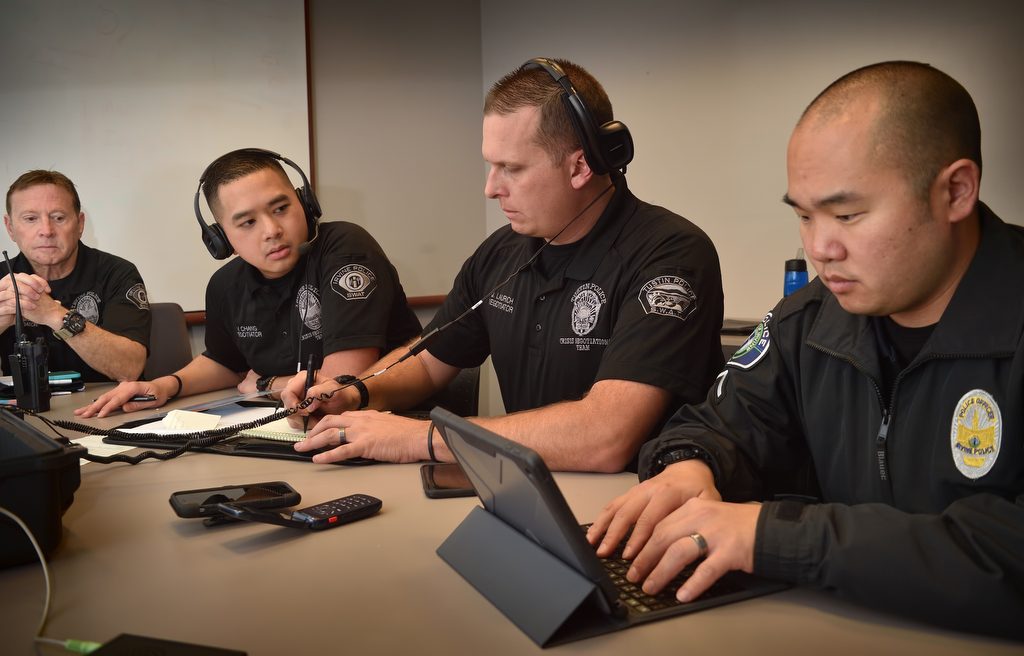The man stood on the top of a multilevel parking structure at a retail and residential center in Irvine as several members of the crisis negotiation team (CNT) spoke to him from a distance.
It was a training day for the Tustin and Irvine police negotiators. But this was not a drill.
Waving what looked like metal piping, the man suddenly threw something. Moments later, the loud zap of a police Taser rang out in the empty plaza and the team moved in to handcuff the man.
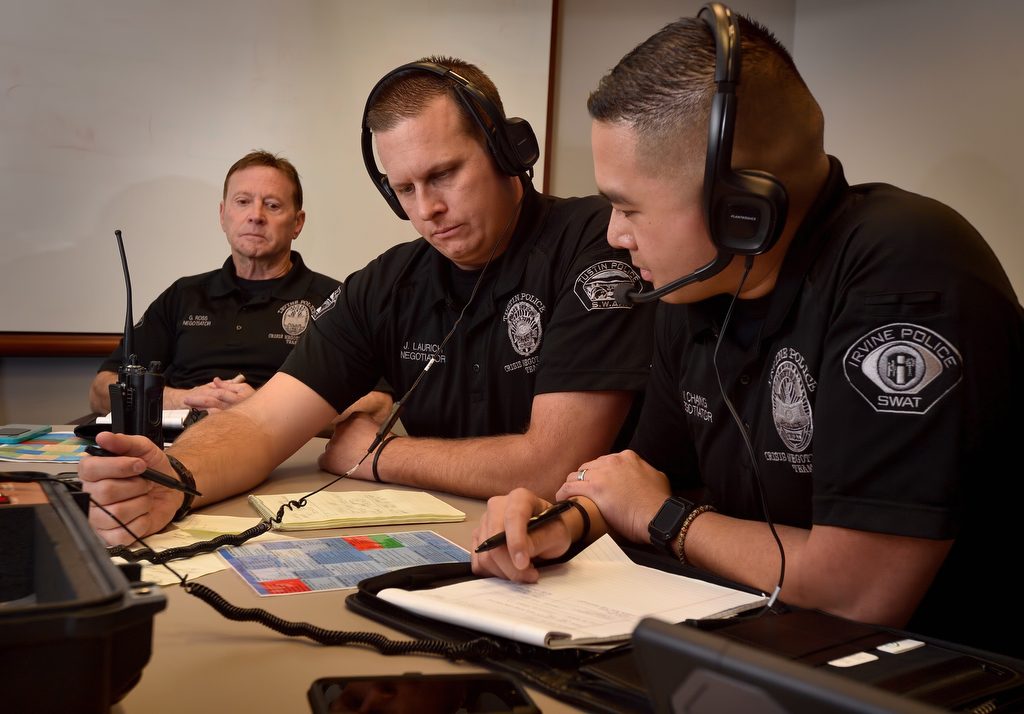
Negotiators from left: Irvine PD’s Gary Ross, Irvine PD’s Tim Schilling, and Tustin PD’s Jeremy Laurich conduct a training exercise where they try to talk a person, known to have a gun, safely out of his house after a domestic abuse situation.
Photo by Steven Georges/Behind the Badge OC
What was supposed to be the team’s monthly negotiations training turned into a real incident requiring the skillset they regularly hone.
Tustin PD’s Sgt. Jeremy Laurich took the lead on negotiations.
“You can’t come across as lacking empathy,” Laurich said of what it takes to be a negotiator. “You have to use empathy to develop rapport.”
Comprising nine negotiators, two of whom are from the TPD, plus dispatchers, technical reserves, and a psychologist, the CNT is a separate, nontactical component of SWAT called in when the skills of a negotiator are required for incidents, including hostage situations and possible suicides. There are two teams, with each on call for two weeks at a time.
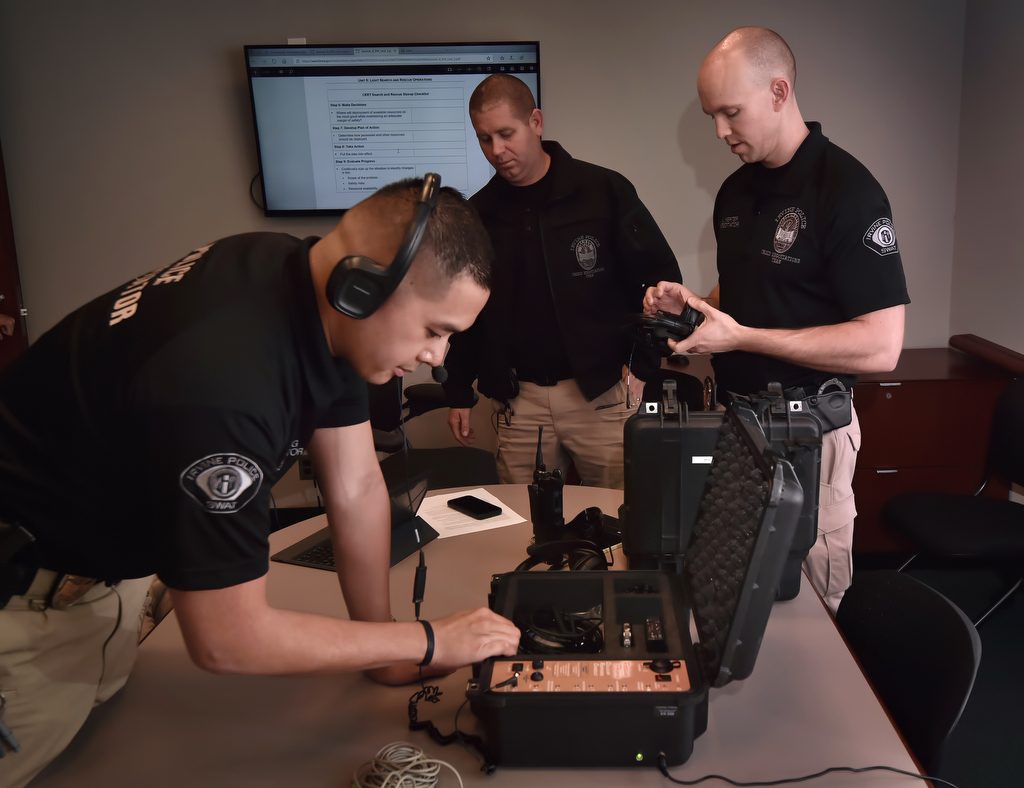
Irvine PD Negotiator Victor Chang, left, sets up the communications equipment with Keith Herter, right, before the start of a training session at Irvine PD headquarters.
Photo by Steven Georges/Behind the Badge OC
Following the early morning incident, which turned out to be a homeless man with mental health issues who was transported to a hospital once in custody, the team proceeded to a debrief of the event at an Irvine Police Department conference room.
“The best thing about these calls … it’s really like our training days,” said Irvine Police Sgt. Tim Schilling, the CNT team leader. “We’ve trained so many different scenarios, so many situations. … We try to think of whatever we’re going to come up against. Today was just a good example of a plan that was put in place … and it all worked.”
The team continued the training day with a scenario of an Irvine PD case from two weeks prior.
“We’re trying to make our scenarios as realistic as possible,” Irvine PD Det. Keith Herter said.
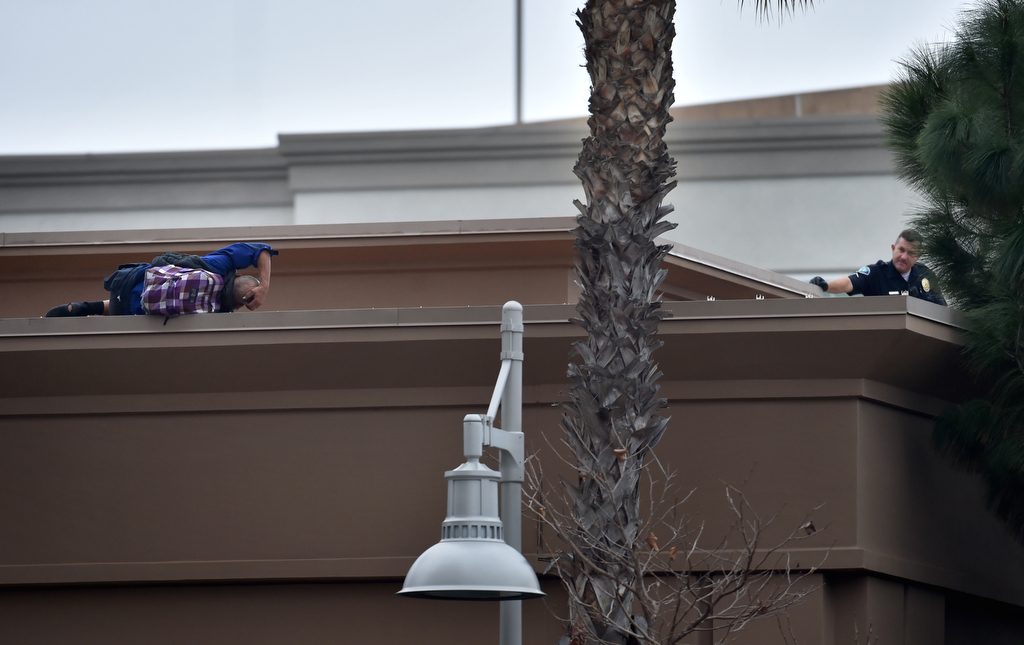
A man on the edge of a multistory parking structure in Irvine talks to the Joint Irvine Tustin PD Crisis Negotiations Team before being talked down safely.
Photo by Steven Georges/Behind the Badge OC
Laurich said a typical negotiations incident goes something like this: patrol officers respond to a call. As it escalates, SWAT is called in to relieve patrol. Then the negotiators come in to make contact by phone with the suspect.
The training scenario involves 18-year-old “Alyssa” and her boyfriend, 21-year-old “Daniel”, who live together and had an argument the day before. Alyssa went to the hospital with a black eye and cut lip. The negotiators, set up in a room with call boxes and headphones to communicate with Daniel, who is played by a negotiator in another room, call the suspect in his home because they know he owns a gun.
Tustin PD Officer Robert Nelson serves as “the scribe,” writing down key points of the call on the whiteboard, including hooks (things the suspect likes talking about) and triggers (things that set the suspect off).
“We quickly try to identify what’s a hook and what’s a trigger,” Nelson said.

A person swinging a metal pipe and sitting on the edge of a multistory parking structure in Irvine talks to the Joint Irvine Tustin PD Crisis Negotiations Team with Tustin PD Sgt. Jeremy Laurich taking the role of lead negotiator in this incident.
Photo by Steven Georges/Behind the Badge OC
Irvine PD Officer Victor Chang is the primary negotiator on the call and Laurich is the secondary, acting as the lead negotiator’s main support while on the call. Laurich writes notes as Chang talks to the suspect.
“We want to make sure that you’re OK,” Chang said to Daniel over the phone line. “Can you tell me what’s going on?”
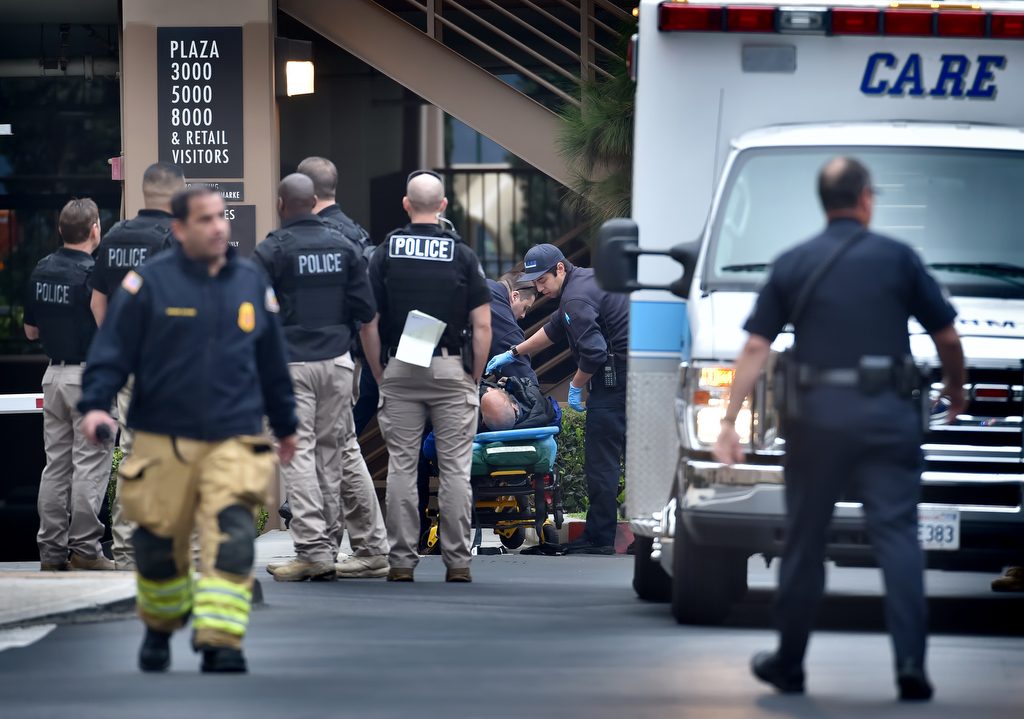
A man who was talked down from the edge of a multistory parking structure is taken into protective custody as the Joint Irvine Tustin PD Crisis Negotiations Team gathers to assess their response to the incident. Normally, a smaller team would respond to a situation like this, but the team had gathered for a scheduled training exercise and decided to all respond as a team.
Photo by Steven Georges/Behind the Badge OC
Following the 30-minute session, in which Daniel at times grows increasingly agitated and reveals he has more than one gun, the training ended with Daniel agreeing to come out.
Laurich said a big part of being a negotiator is talking – about anything. He said the homeless man from the morning incident wanted coffee, which gave Laurich an in to ask him as much about coffee as he could.
What may seem to be casual conversation about mundane topics, is actually is very purposeful and tactically orchestrated. The goal in all situations is a safe resolution and the CNT plays a big part toward achieving that resolution.
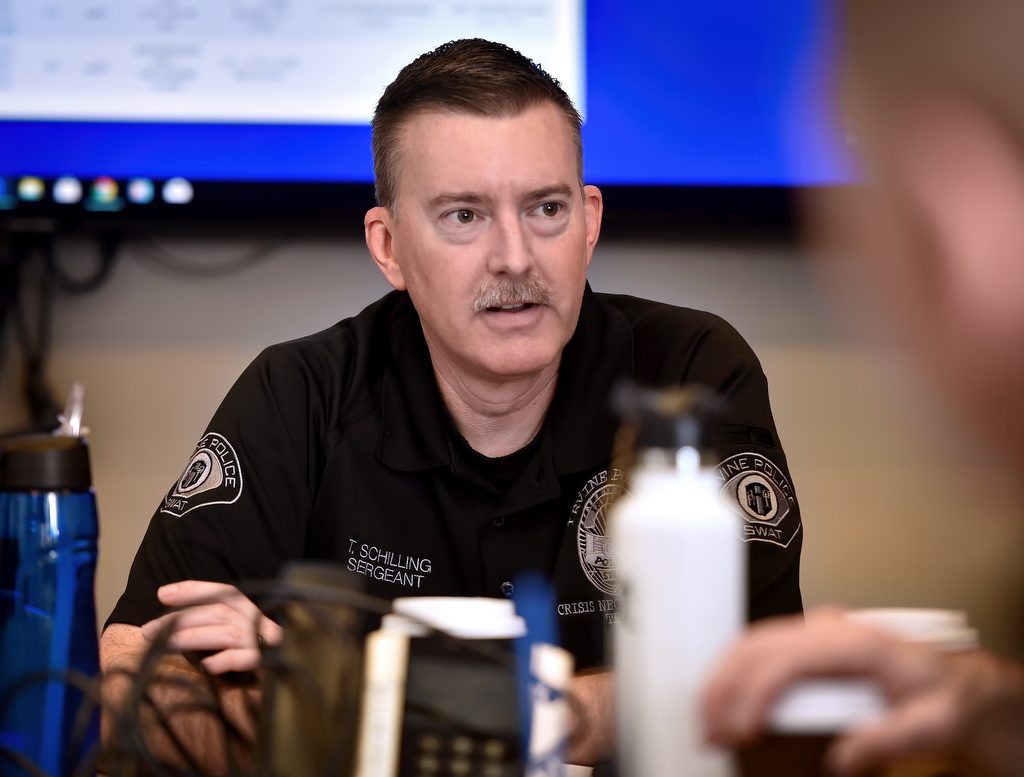
Irvine PD Sgt. Tim Schilling leads a Joint Irvine Tustin PD Crisis Negotiations Team training session.
Photo by Steven Georges/Behind the Badge OC
 Behind the Badge
Behind the Badge
